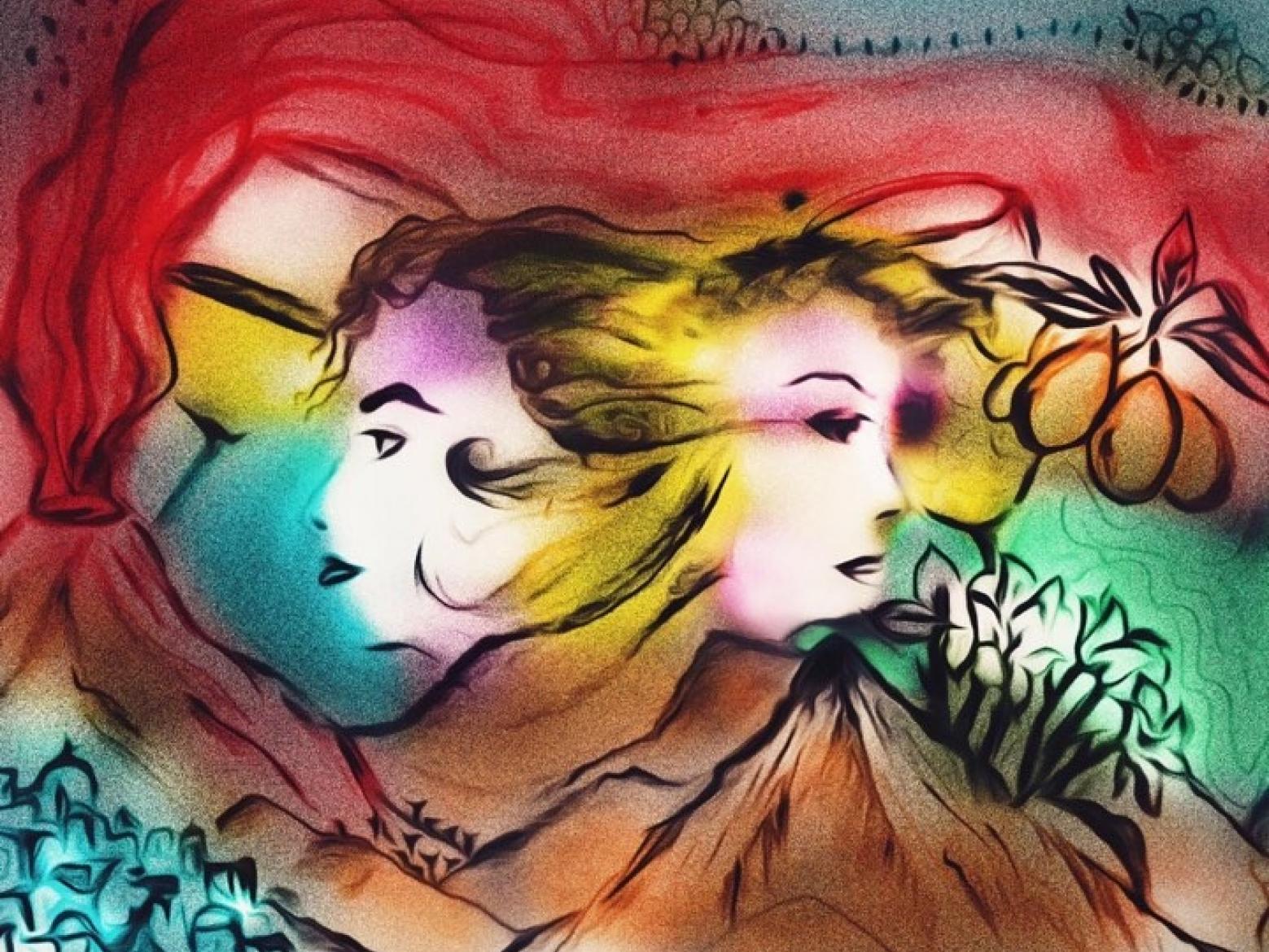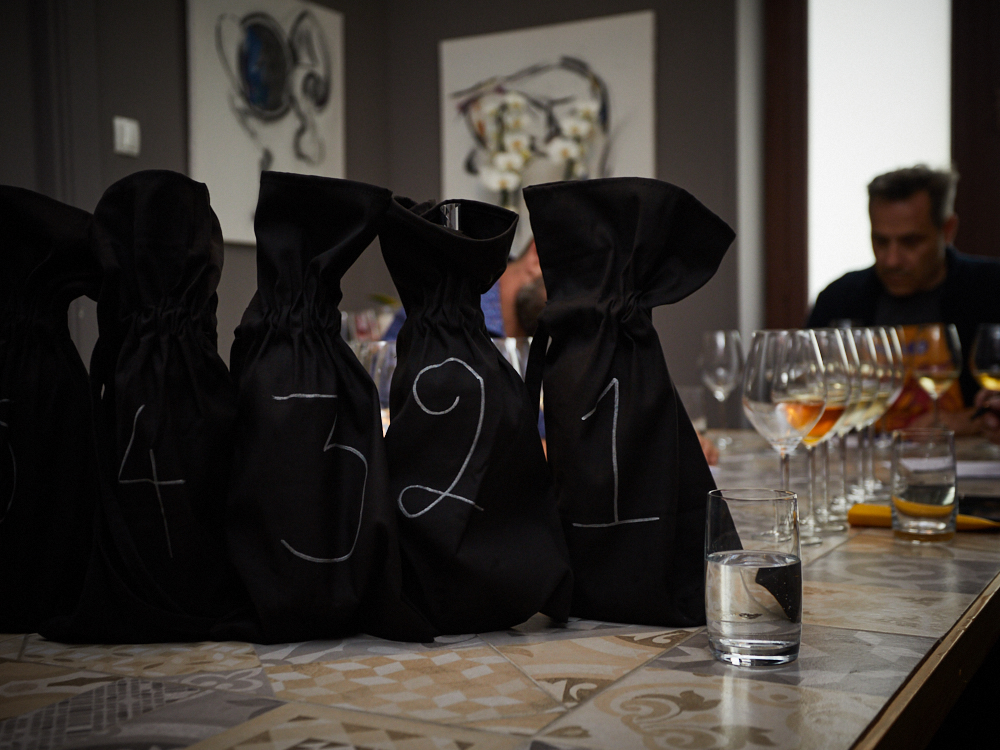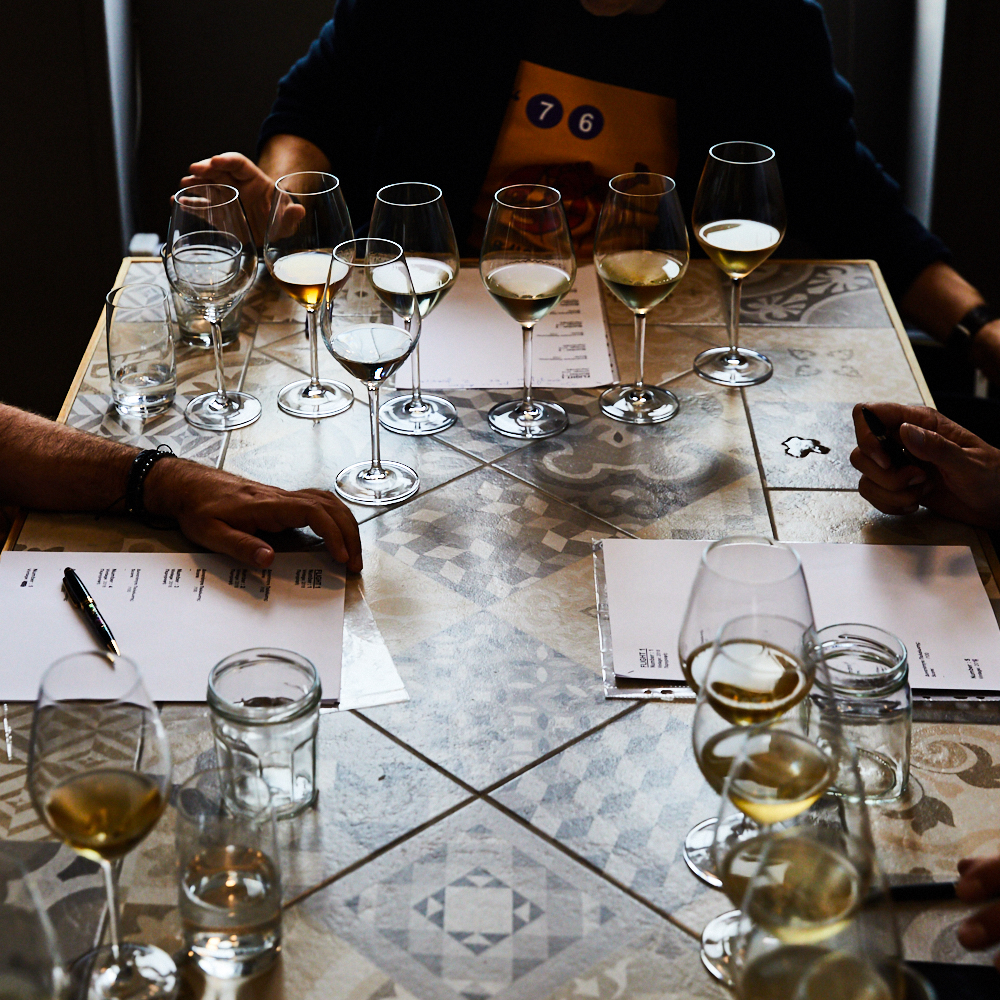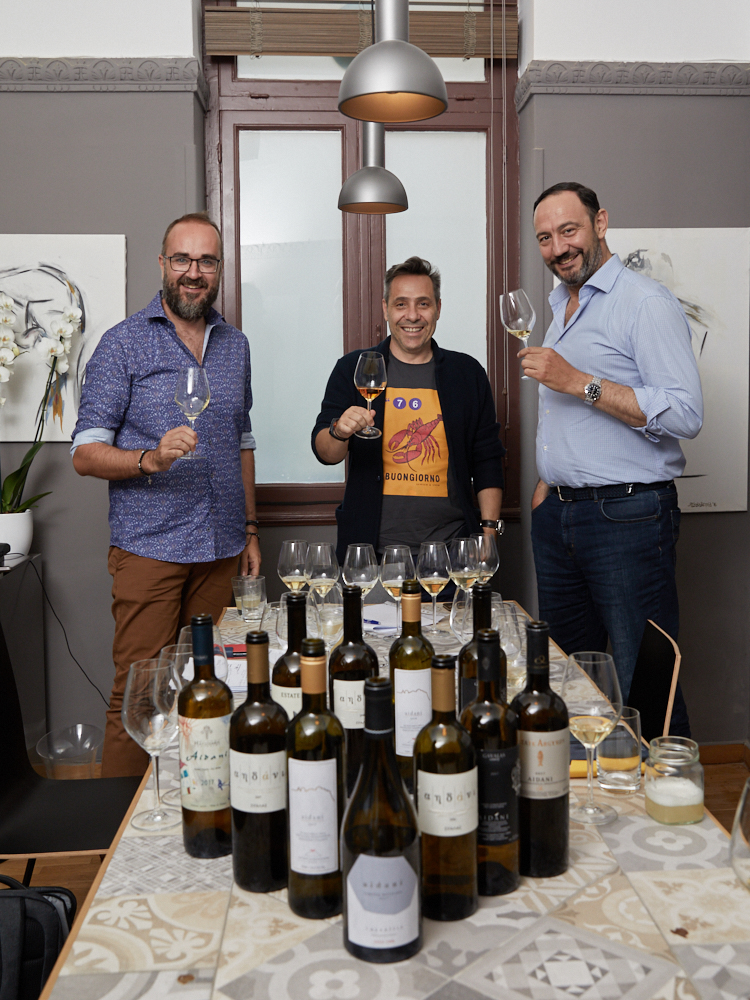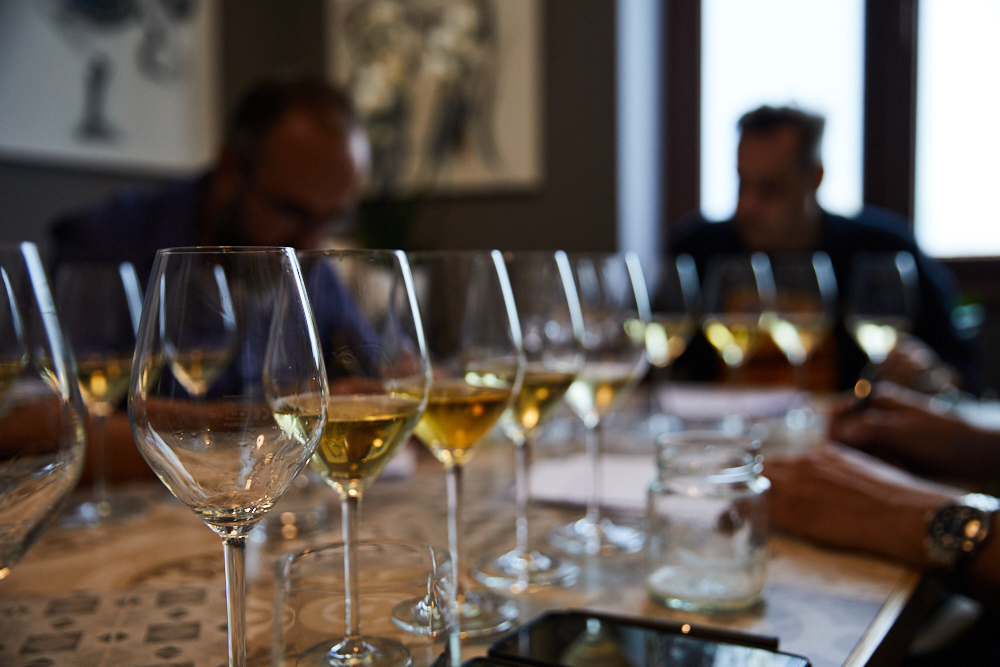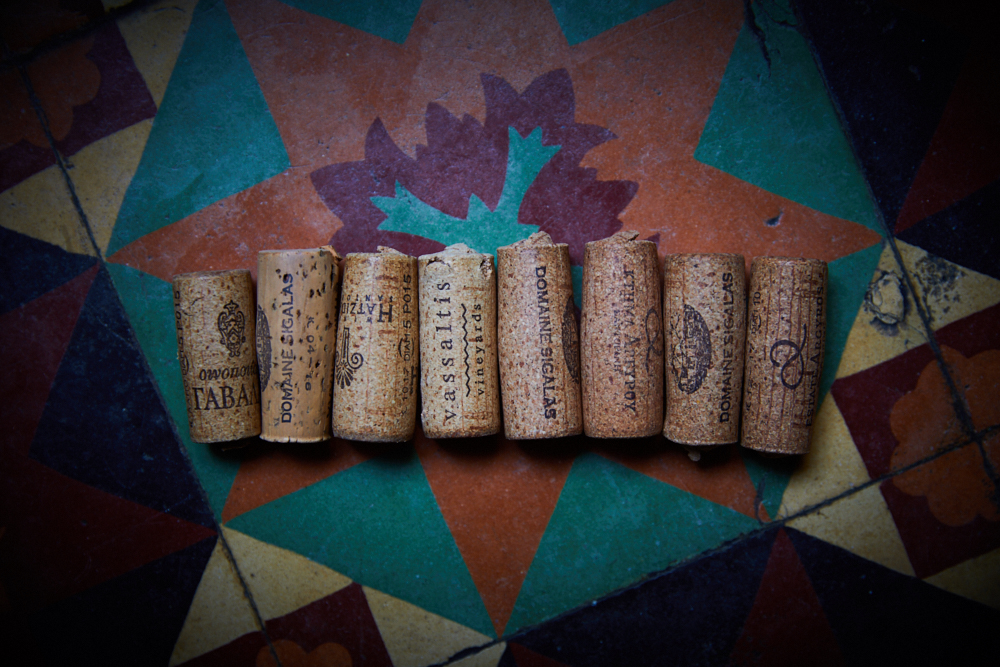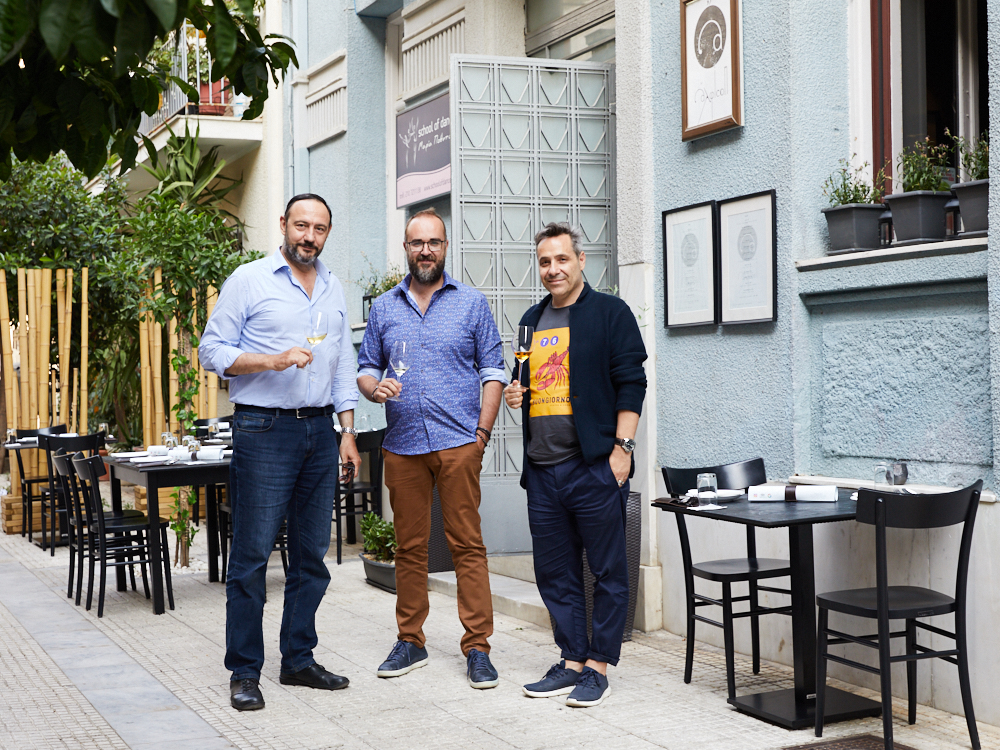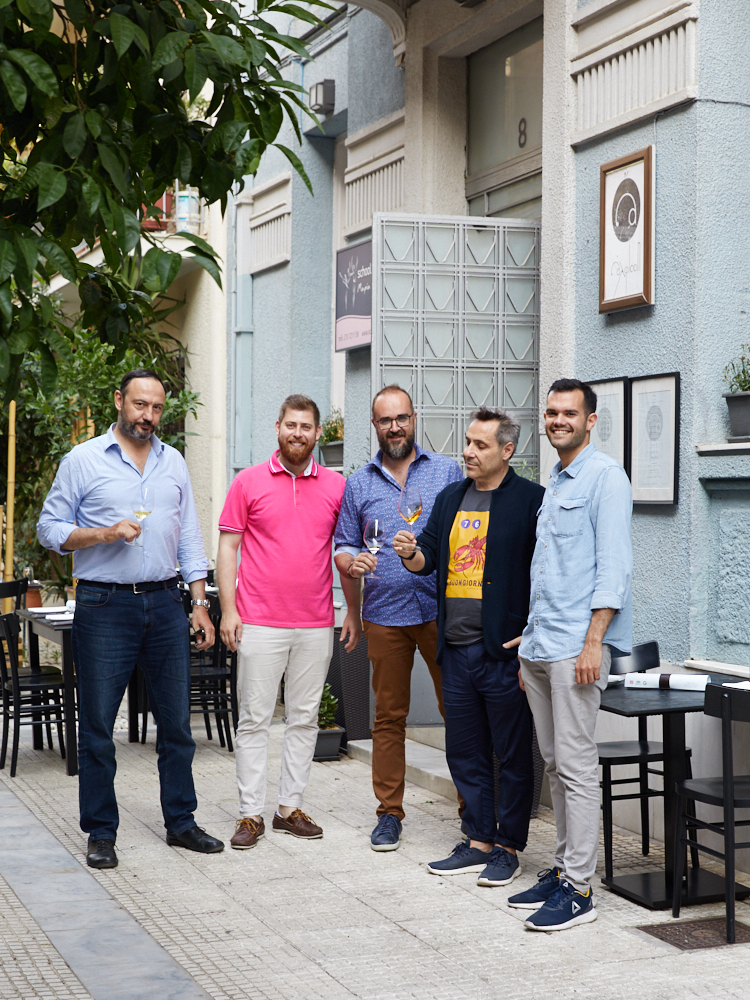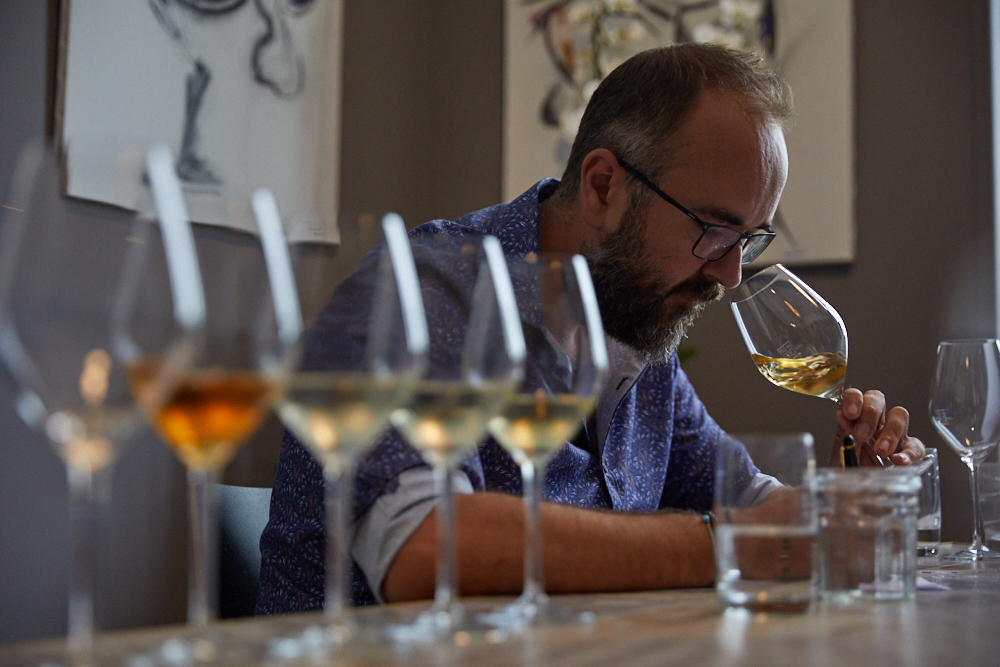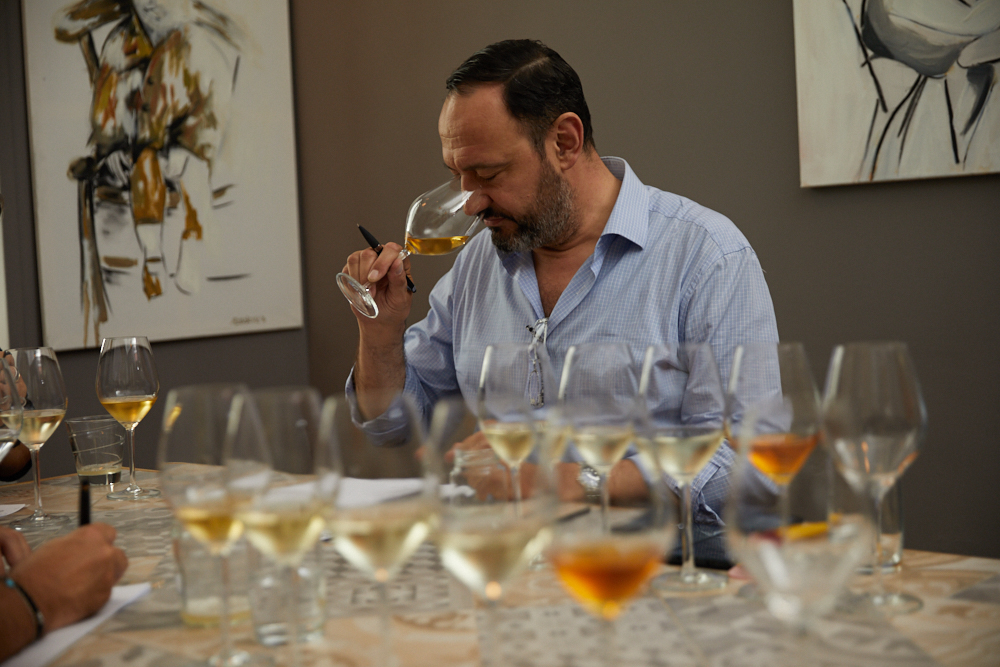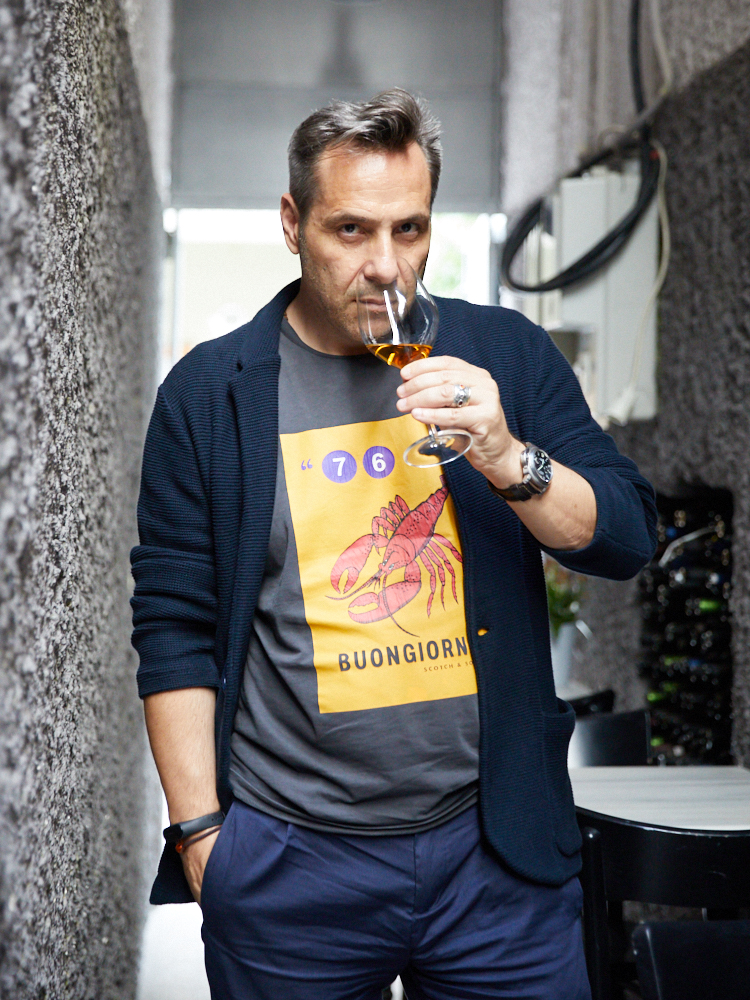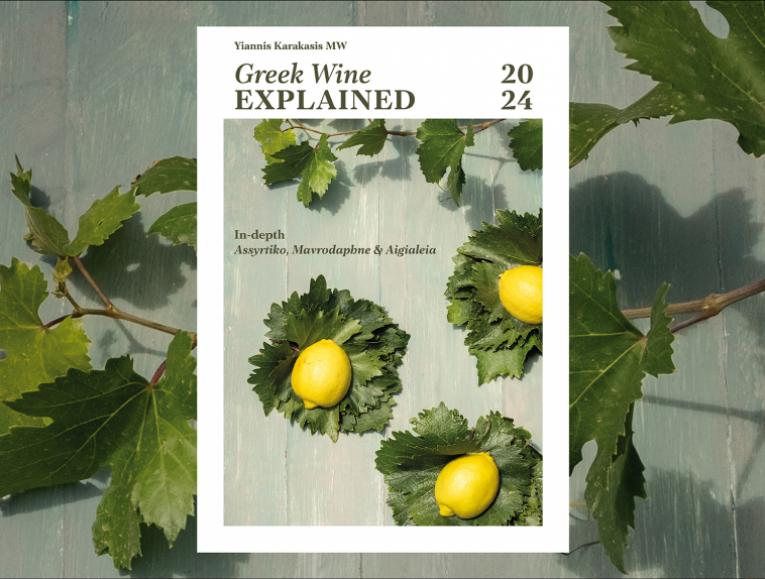Aidani: A new love affair
Aidani is another of those hidden gems of the Greek vineyard. It ranks as second on the island of Santorini (Assyrtiko is in the first place). Six producers include a 100% varietal wine among their wines. It is also used occasionally to complement the dry Santorini blend in a portion of up to 25%. But, in reality, we have very little information about this variety and this is something which intrigues me. I like to try to get to the core of things; to understand a variety and to present my findings and conclusions.
Therefore, another blind tasting was scheduled for karakasis.mw, in order to break down, typicity, styles and aging potential. Before we go into our findings it is worth providing some information about the variety:
What we know
According to Wine Grapes, Aidani is thought to have originated in the city of Adana, in SE Turkey, but there is no genetic evidence to confirm this hypothesis. Plantings on the island are given in approximation. If we consider that the total vineyard area of Santorini is around 1100 ha, Paris Sigalas, of Domaine Sigalas, takes a guess and says that about 5% is Aidani, whereas Matthew Argyros, of Argyros Estate, reckons it covers about 2%. Whichever the actual number, this means that we are talking about a maximum of 22 to 55 ha, which is not really that much, and makes Aidani a rarity.
“We already knew that Aidani had distinctive aromas, because it was used in the Vinsanto blend, but we started vinifying the variety on its own in 2013,” says Paris Sigalas. Mathew Argyros declares his love for the variety; this is proven by the fact that the Argyros Winery was the first to produce it as a single varietal, in 2003.
Aromatically speaking Aidani is in the antipodes of Assyrtiko. It is expressed with higher intensity and more aromas. Think of jasmine, peach, kumquat and tropical fruits like lychees and melon. This is usually combined with a rather buttery texture, with much softer acid. Some producers claim it can be salty in some vintages. For example, Lefteris Anagnostou, winemaker of the Karamolegos winery, talks about saltiness in the 2017 bottling.
In the vineyard, Aidani is regarded as rather productive. It has bigger bunches and can yield up to 35 hl/ha, compared to the 15 hl/ha of Assyrtiko. Its bunches according to Yiannis Papaeconomou, winemaker of Vassaltis, can exceed even 2 kilograms in weight. It is a thick skinned variety which means that the tannins need refinement and in order to achieve this there are two options, according to Sigalas. One either aims for higher maturity on the vine or ages the wine in oak. It is a demanding variety that needs two harvests, in order for it to preserve its acidity; this statement was confirmed by both Argyros and Anagnostou.
What we would like to explore
The styles, winemaking approaches and the aging potential. Anagnostou considers that it can age for 3-4 years based on his tasting experience, whereas Papaeconomou believes that there is a safe 3 year aging window. My experience would say approximately 4-6 years for good vintages, but let’s wait and see.
The tasters and their views
Gregory Michailos (consultant and educator, contributor for karakasis.mw)
Aidani is a grape variety that has not been fully exploited and, due to the insignificant number of plantings, it will probably remain so. However, it’s an interesting grape variety, slightly more aromatic and broader than the austere Assyrtiko, and apart from its role as a minor blending partner for Santorini wines it can also provide some wonderful, terroir-driven, varietal wines.
The blind tasting revealed two different approaches to its winemaking. One which was of fuller style and another which was more mineral; both were capable of producing complex examples. Nevertheless, I would argue that it is the powerful terroir of Santorini that leaves its characteristic footprint on the wines and this always overrides any varietal expression.
Stathis Saltas (consultant and educator)
My feedback from the tasting would be that this is only the beginning. Aidani definitely presents an interesting spectrum of aromas, but it lacks the structure and nerve of Assyrtiko. For this reason, its aging potential is not emphasized, as one expects it to have a medium term aging potential. Styles can only be the centre of a long discussion. The riper and more oxidative style, although impressive and layered, can be slightly tiring when balance is not absolutely perfect.
The Wines
The wines were tasted blind and revealed after each flight. All samples were provided by the producers, except the Hatzidakis Aidani which was purchased from Greece and Grapes. 2018 and 2017 vintages were assessed. All scores reflect the average of all tasters. Individual scores in brackets: Yiannis Karakasis (YK), Gregory Michailos (GM), Stathis Saltas (SS)
Flight 1
1. Sigalas Aidani 2018 (90)
Medium golden, ripe style, yellow fruits, tropical hints, honey, orange zest and nuttiness. Deliberately oxidative. Interesting on the palate, extracted with 14% abv layered with garrigue notes and Mediterranean herbs. Powerful and rich. 2-3 years aging potential. (YK 90, GM 90, SS 90)
2. Argyros Aidani 2018 (90.6)
Lemon coloured. A different more mineral and salty style, white flowers, honeysuckle, peach, minerals. Some yeasty notes adding complexity. Very vibrant on the palate, textural with abundant tropical fruit, fresh acidity and a slight phenolic grip. 4-6 years aging potential. 13% abv (YK 91 GM 91 SS 90)
3. Gavalas Aidani 2018 (89)
The nose is similar to Argyros, yet with some cheesy notes in the beginning. Yellow fruits, yeasty notes and on the palate it is dry, with balancing acidity. However, it lacks a bit of mid-palate depth and has a medium, lemony, finish. 3 years aging potential. 12.5% abv (YK 89 GM 89 SS 89)
4. Karamolegos Aidani 2018, screwcap (91.3)
Matchstick reduction on the nose, crushed sea shells opening up to honeyscuckle and stone fruit, plus lemony aromas. The palate is the closest to Santorini, nervy, vibrant with loads of freshness and salty minerality. Long volcanic finish. 5+ years aging potential. 13% abv (YK 92 GM 91 SS 91)
5. Sigalas Aidani (Nykteri style) 2013 (89.3)
Amber colored, dried fruits, figs and raisins, toffee, caramel and honey. Not overly sweet with its 30 g/lt; good balance, but not great complexity on the palate. A bit alcoholic. Well made. Unreleased at the moment. 500 bottles (YK 90 GM 89 SS 89)
Flight 2
1. Argyros Aidani 2017 (91)
Lemon green, quite youthful in color. Layered nose revealing roasted hazelnuts, lemon blossom and jasmine. Terroir driven on the palate, salty with garrigues, kumquat and a long zesty finish. Fine acidity levels and a Riesling-like character. 3-5 years. 13% abv (YK 91 GM 92 SS 90)
2. Gavalas Aidani 2017 (90.6)
Lemon gold in color, with evolution showing on the nose, but delivers solid complexity. Some oxidative hints. The palate is powerful, with great intensity of aromas and still fresh acidity resulting in a long, slightly oxidative finish. Very impressive effort. 12.5% abv. 2 years (YK 91 GM 91 SS 90)
3. Sigalas Aidani 2016 (89)
Sigalas style is characterful, delivering a sweet nose, with tropical and overripe fruits. It is honeyed, and gives you an impression of sweet wine on the nose, but with less intensity. It’s almost dry, but the sweet flavors and the alcohol give you a rather sweet impression; great weight on the palate, complexity and a long lasting finish. A slightly higher acidity would result in greater overall balance. Very complex, love it or hate it style. 13.5% abv (YK 86, GM 91, SS 90)
4. Vassaltis Aidani 2017 (88)
Lemon gold colour with ripe apricot on the nose; quite fresh on the nose with hints of flowers. Round, satiny and delicious with moderate concentration and fairly long finish. For the next 1-2 years. 13.5% abv (YK 88 GM 88 SS 88)
5. Karamolegos Aidani 2017 (91.3)
Very expressive, ripe yellow fruits, honeysuckle and jasmine it has a lovely aromatic character. The palate is dry, soft yet with balancing acidity and quite long aftertaste. Harmonious with seductive pineapple on the long finish 13% abv. 3-5 years (YK 92 GM 91 SS 91)
6. Sigalas Aidani 2017 (92.3)
Again the style is very recognizable, with sweet tropical fruits, honey, beeswax and great density and depth of fruit. It is the palate which stands out here, with amazing concentration and complexity, buttery aromas, yet great freshness and saltiness. Complex, long-lasting finish, but its balance is what makes it a profound effort. 14% abv (YK 92 GM 93 SS 93)
7. Hatzidakis Aidani 2017 (87.6)
Medium golden in color. Clean aromas on the nose, but the palate lacks balance and freshness. Buttery and oxidative. (YK 86 GM 88 SS 88)
Conclusion
Two styles were identified; a ripe Nykteri style, produced by Sigalas, and a more floral, mineral style by the other producers. My personal view favors the more protective approach rather than the more oxidative one, although I would like to see Aidani with just a kiss of oak or with some skin contact.
Floral aromas of jasmine, honeysuckle and lemon blossom were identified in most of the wines. There is also kumquat, pineapple and tropical fruit. Saltiness is present up to a point and this may be associated either with vintage/terroir characteristics or winemaking choices.
5 years is a good aging window. As more producers are showing trust and faith in the variety, one can expect that the winemaking of the variety will evolve and will lead to more fine wines. My understanding is that the variety needs altitude to preserve its acidity.
Aidani is not a variety of the highest class, but it can easily play a supporting role to Assyrtiko. It can be a nice alternative to the classic Assyrtiko or Santorini and can work well as an aperitif due to its floral nature. It has the advantage that it is versatile with food due to its aromatic quality, but, on the other hand it is not as overtly aromatic as Sauvignon Blanc.
Illustration by Marios Karystios
Photos Nikos Koustenis
Special thanks to Alficon Restaurant for hosting the tasting
